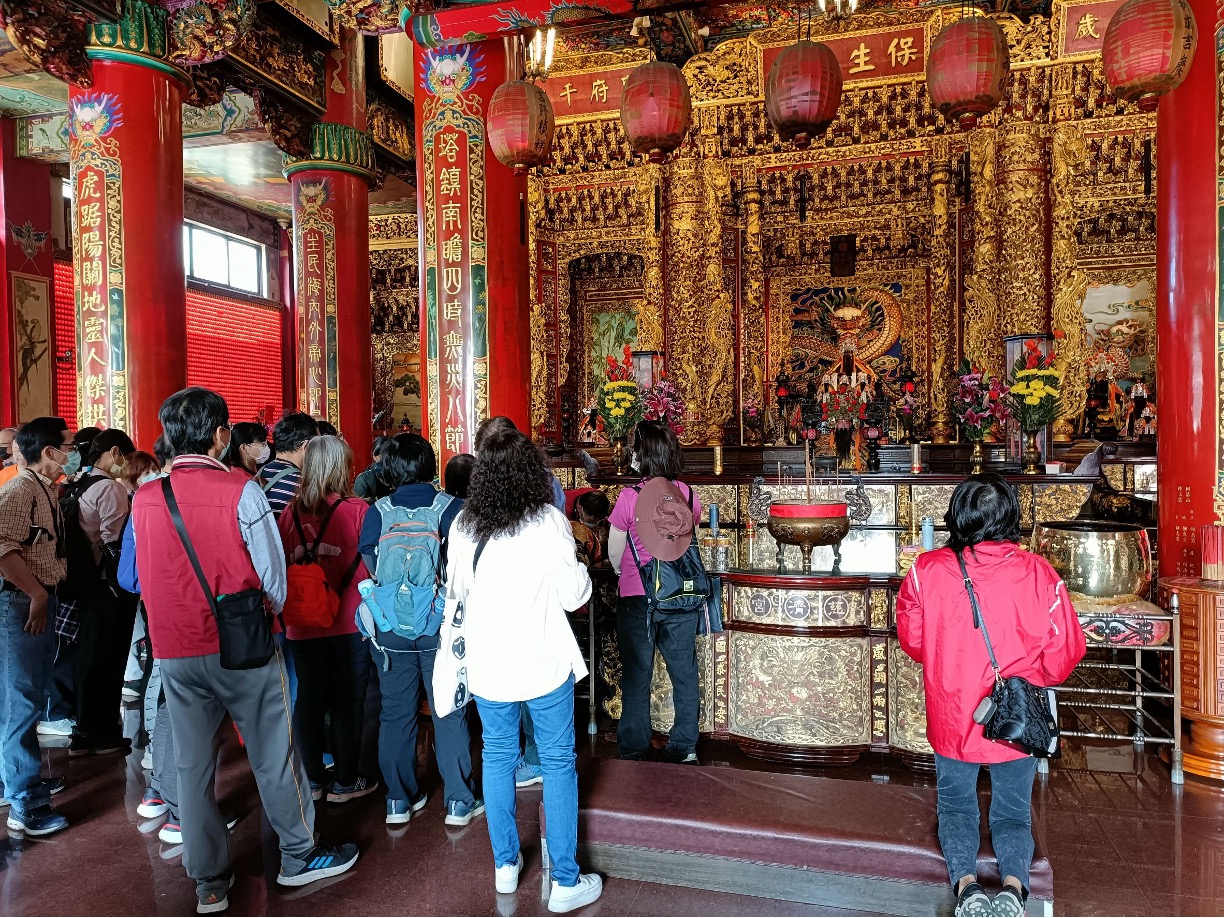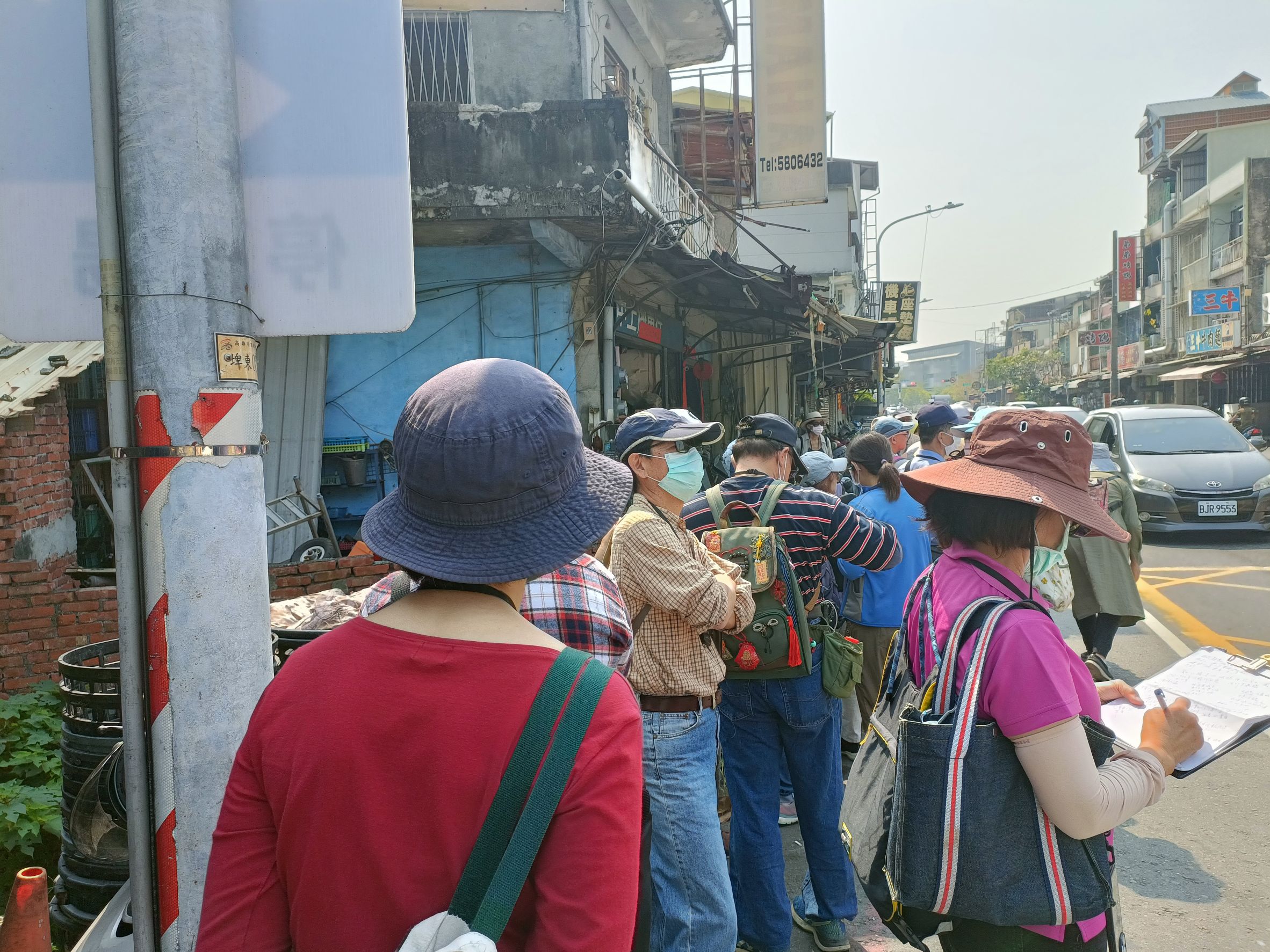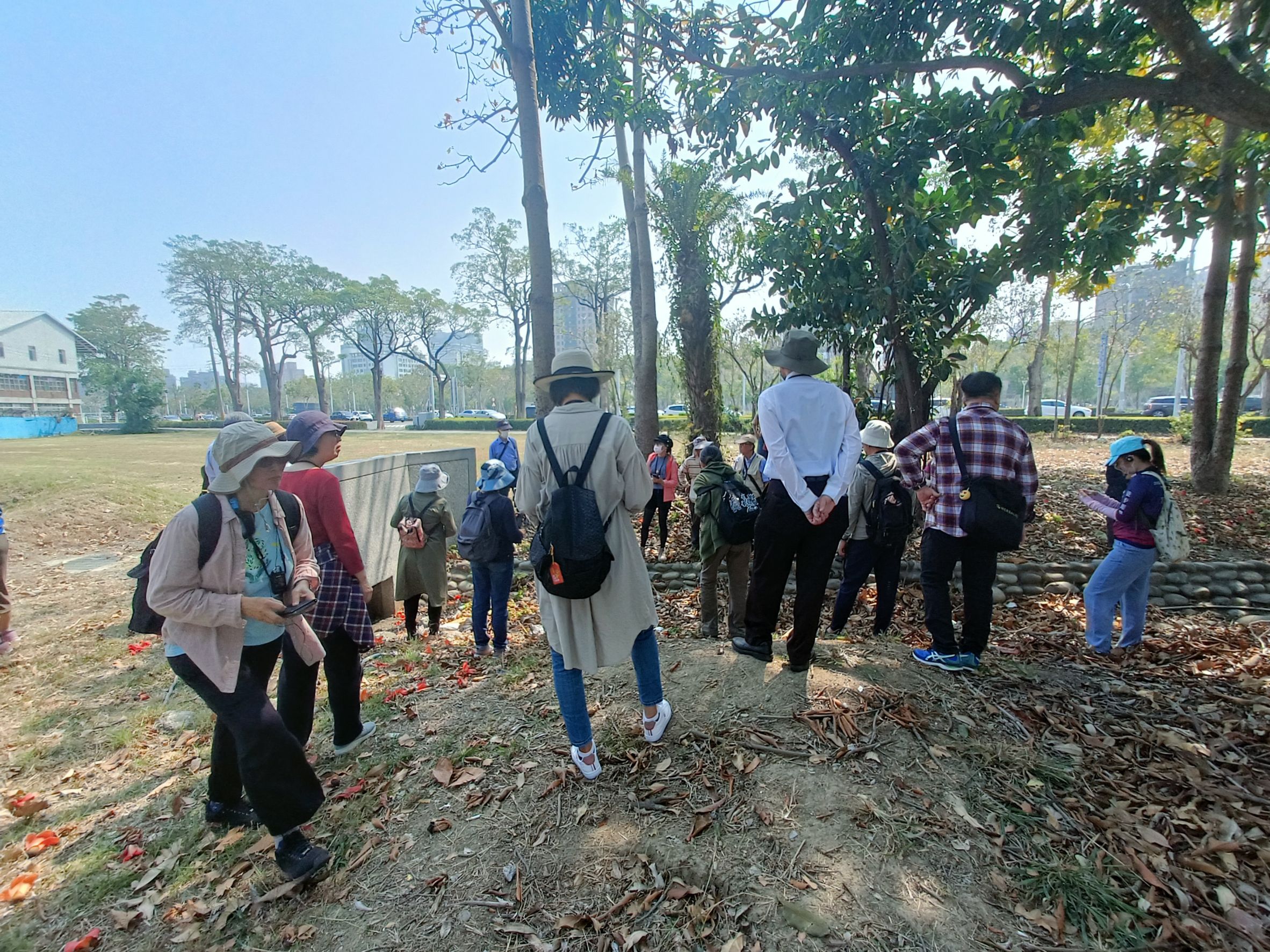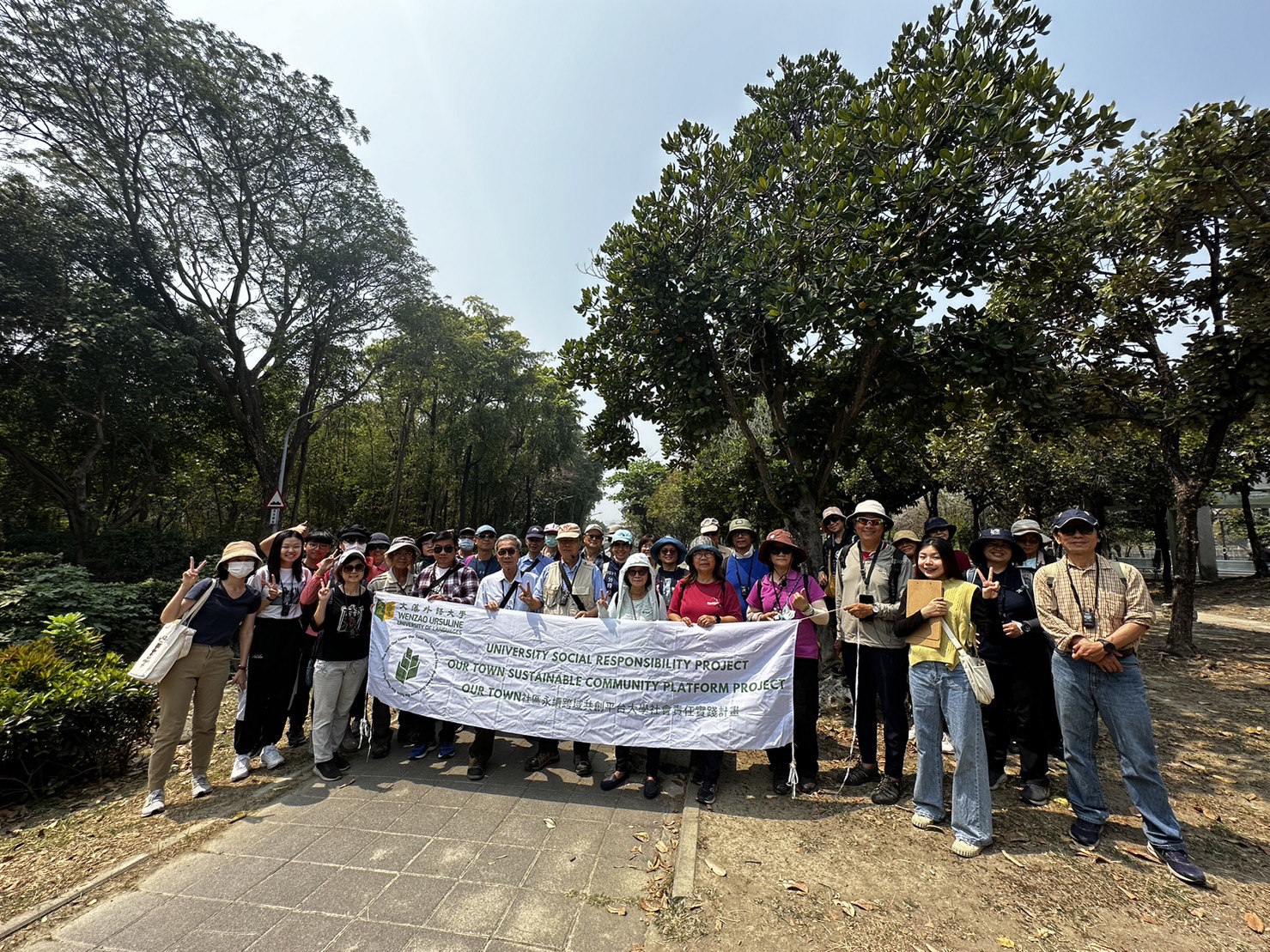by Jennifer, project student
Wenzao Ursuline University of Languages' University Social Responsibility Practice Program, “OUR TOWN Community Sustainable Cross-Domain Collaborative Platform Project”, includes five community events, one of which is the “Culture and History Innovative Community.” On March 16th, the community organized a walking tour, inviting local cultural and historical researcher and chairman of Kaohsiung Cultural Association, Professor Guo Ji-qing, to provide participants with an in-depth explanation of the history and current state of Kaohsiung's Cao Gong Irrigation Channel. Through this event, participants followed in Professor Guo's footsteps along the ancient canal paths, gaining a comprehensive understanding of the cultural and historical landscape of the Zuoying area.
The Ciji Temple, located next to Lotus Pond, is a three-hundred-year-old architectural marvel that integrates art with faith. Inside the palace, participants witnessed exquisite carvings and paintings, which not only showcase the brilliance of Taiwan's traditional crafts but also reflect the local efforts in preserving cultural and historical heritage. Later, Professor Guo led the participants to the edge of Lotus Pond, overlooking the distant “Dragon and Tiger Pagodas.” In 1974, a deity worshiped in the Tzu Ciji Temple warned of an impending disaster. In response to this divine revelation, devotees collectively funded the construction of these pagodas as a place for prayer and protection. Two years later, the majestic Dragon and Tiger Pagodas stood tall, becoming one of the landmarks of the Zuoying District. The pagodas are not just a religious site but also a cultural treasure of the Zuoying District, attracting many visitors.
The Cao Gong Irrigation Channel was once the lifeline of the Zuoying area, providing sufficient irrigation water for agriculture, promoting prosperity in farming, and playing an indispensable role in drainage and flood prevention, safeguarding the lives and property of the residents. Within the premises of the old Zuoying Junior High School, many ancient waterways carved in the 22nd year of the Qing Daoguang era (in 1842 AD), such as the “Shiwugo Irrigation Channel,” “Qianfeng Irrigation Channel,” and “Turtle Head Flume,” have been preserved. These historical irrigation channels have been retained and protected from destruction during the development of the site. Observing nearby channels like the “Naba Irrigation Channel,” “Zhouzaiyang Irrigation Channel,” and “Linzaibian Irrigation Channel” also reveals traces of history. The preservation of these channels is attributed to the relentless efforts of various historians and associations, continuing to play a part in the local cultural and historical narrative, inspiring ongoing exploration, and understanding of history and culture.
In this cultural and historical walking tour, Professor Guo guided participants through the cultural and historical charm of the Zuoying Cao Gong Irrigation Channel. Passing through places like Lotus Pond, Shoushan National Nature Park, and Kaohsiung Original Botanical Garden, the explanations provided a fresh perspective on history. The “OUR TOWN Community Sustainable Cross-Domain Collaborative Platform Project” is dedicated to enhancing local connections through various community activities, helping people understand local culture and promote regional revitalization. Future events and lectures by scholars will continue to contribute to the university's social responsibility efforts. The “Culture and History Innovative Community” will invite Teacher Guo Ji-Qing again on April 20th to deliver a lecture on “Exploring Military Sites in the North Kaohsiung Area,” looking forward to participants' continued involvement!

Professor Guo Jiqing instructed participants to worship God in Ciji Temple

The adventure tour of the Cao Gong Irrigation Channel led by Professor Guo Jiqing

Participants examined the Cao Gong Irrigation Channel

Group photo of participants, lecturer, and workers
